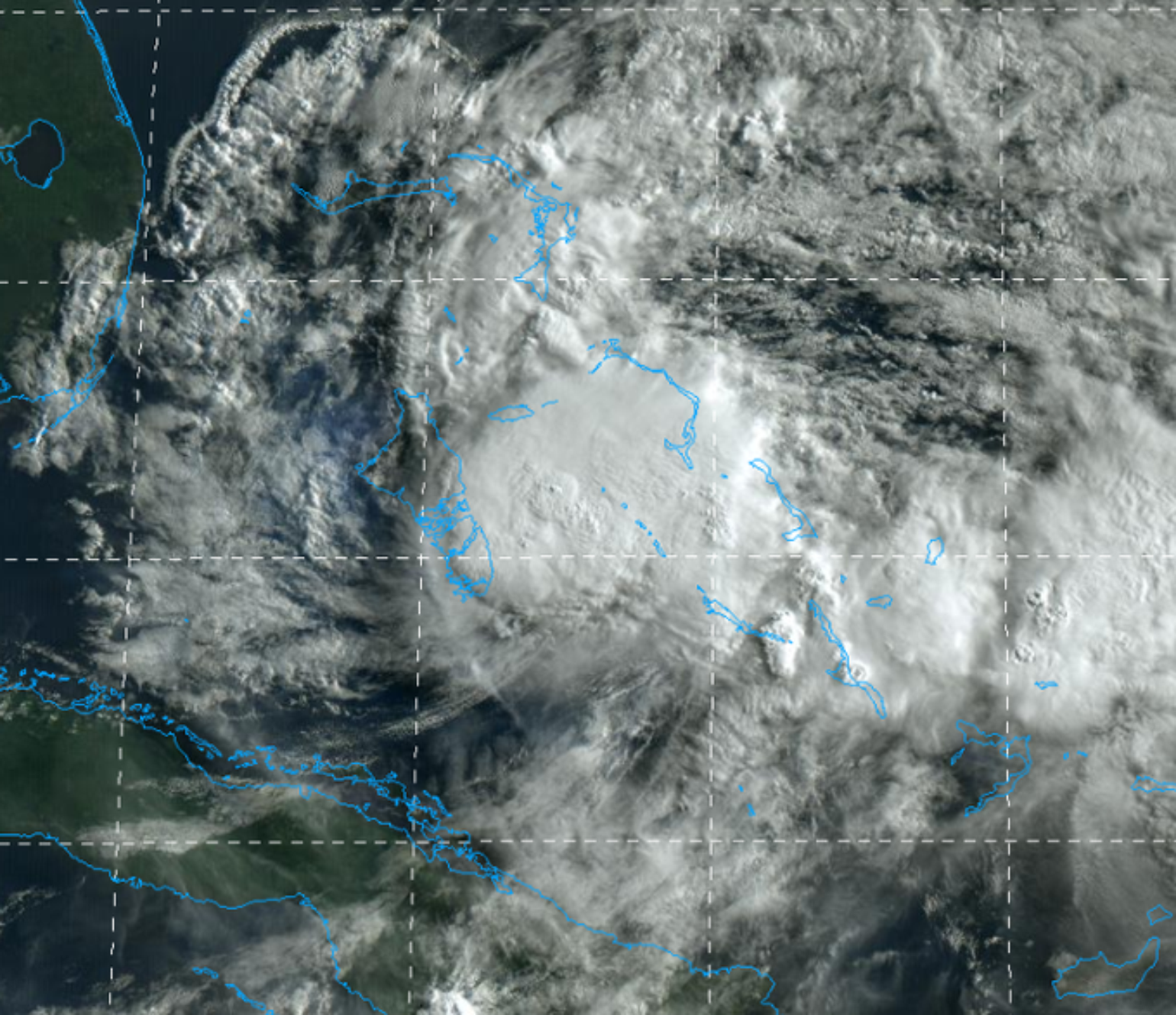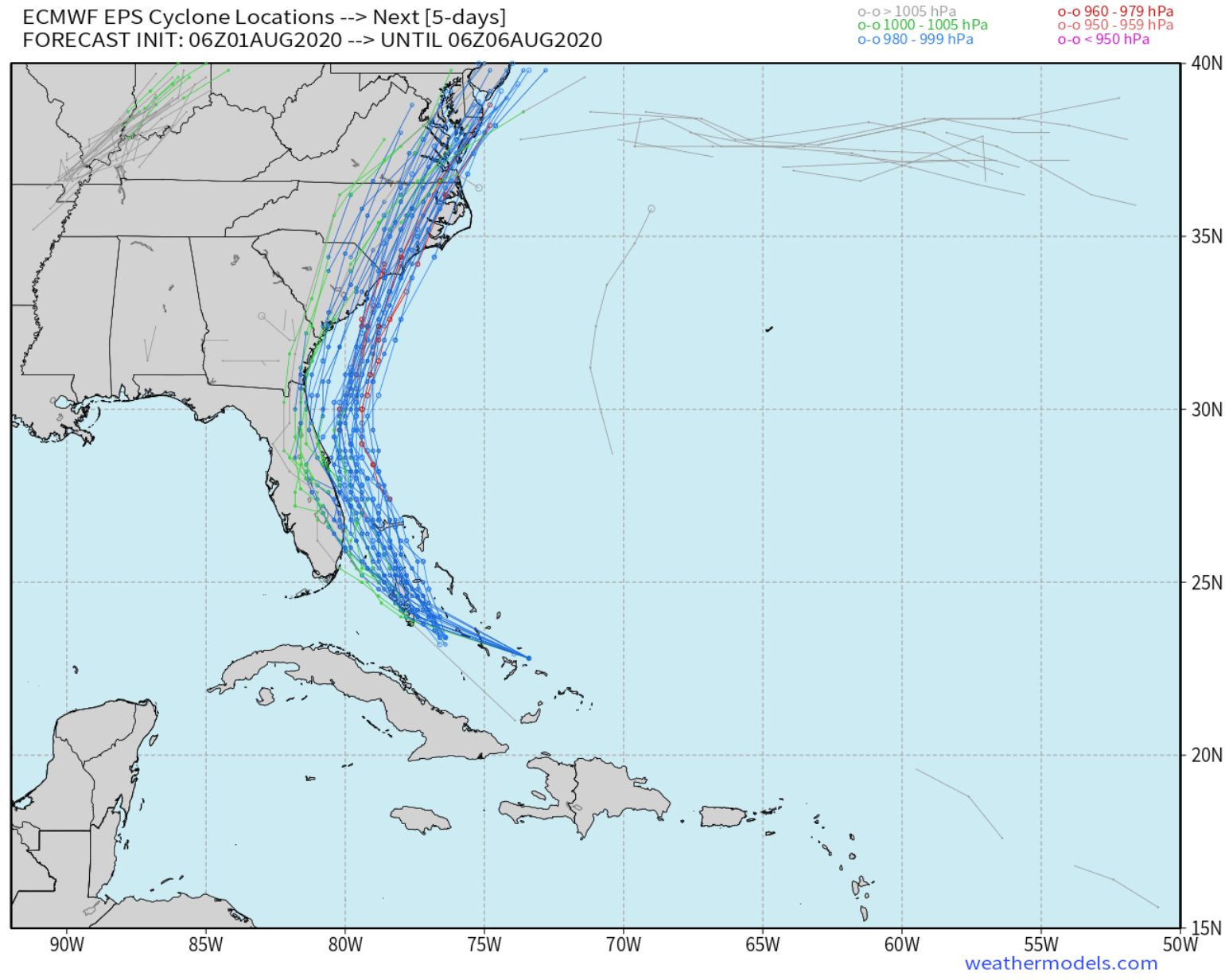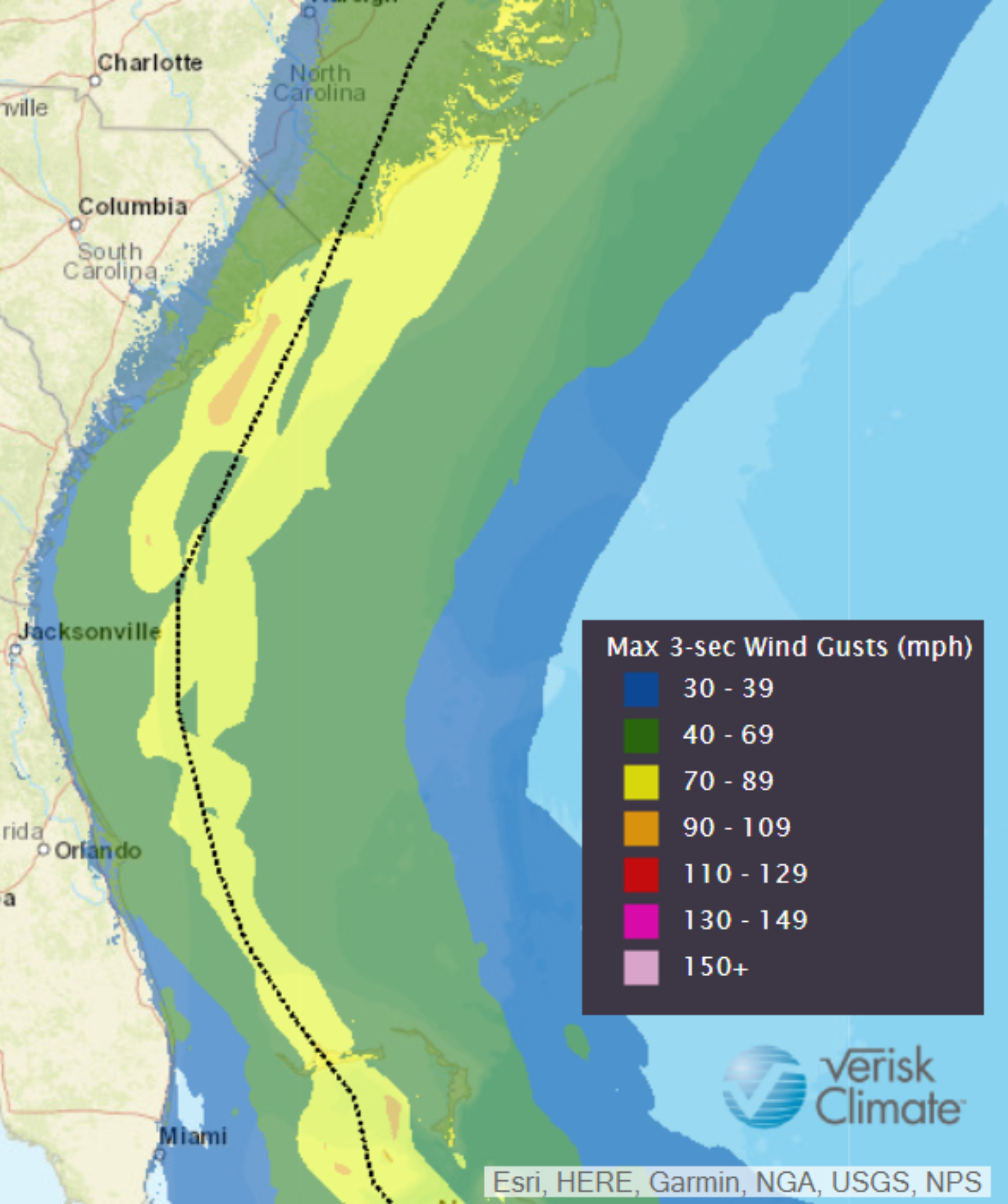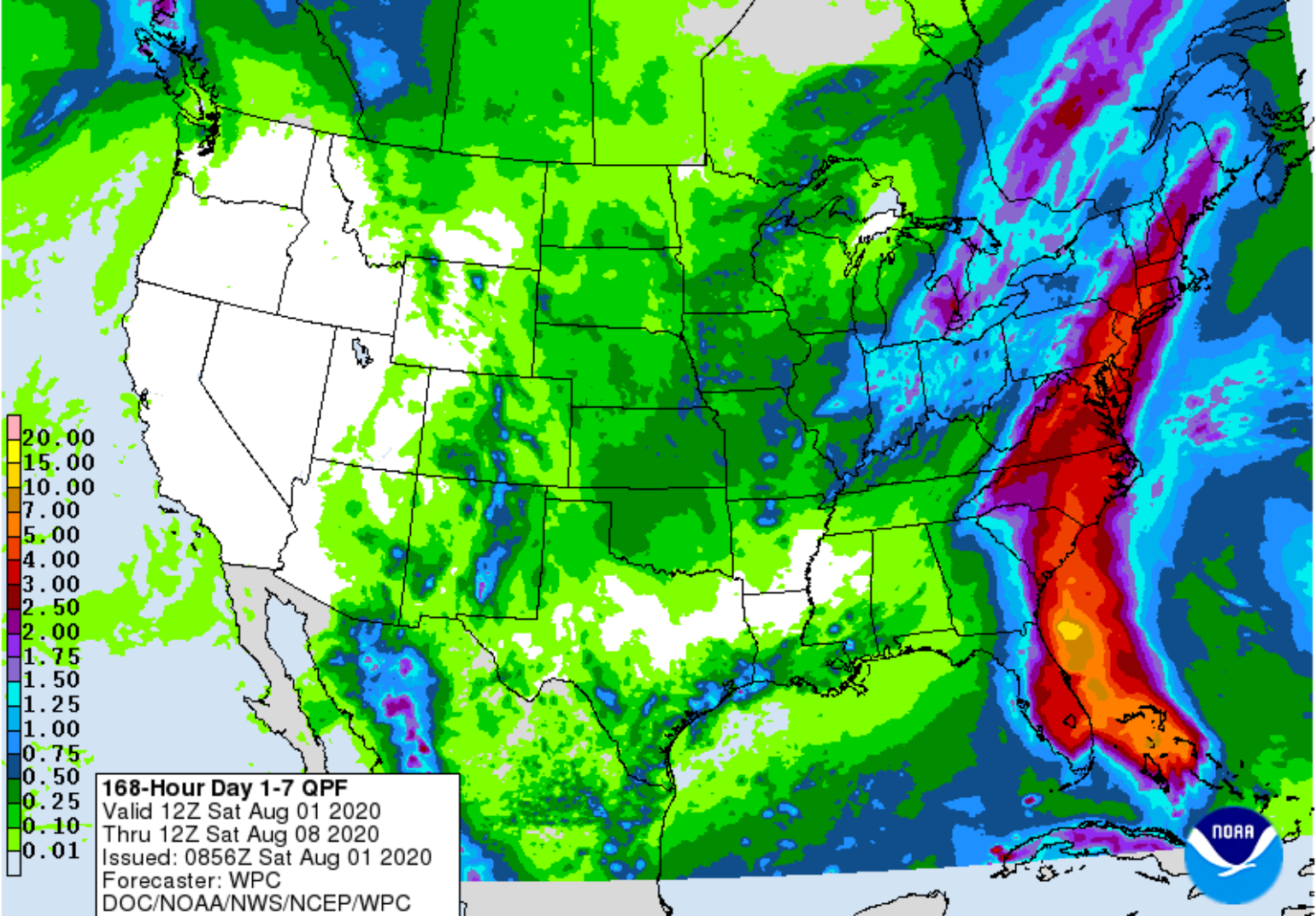By Andrew Siffert – Vice President / Senior Meteorologist
This morning Isaias is not a textbook hurricane based on the radar images coming from the Bahamas and the ragged satellite representation. This is all due to the westerly wind shear and dry air that was discussed in the July 29th BMS Tropical Update.

One of the most important aspects of Isaias’s structure is that the overall convection has shrunken in size and the hurricane-force winds and heavy squalls are only present north and east of the center as the dry air is eroding the eyewall and squalls south and west. This is good because, as the trend continues, the worst effects will be that much more offshore with less land impacts.
Track Philosophy
Overall the general idea that Isaias will track at or right along the Florida coastline still holds with today’s update. There is still plenty of model support that Isaias makes landfall near West Palm Beach, but there is also model support which goes along with the National Hurricane Center official forecast track that Isaias will not make landfall on the Florida coast, but get very close tonight (20-40 miles) just east of West Palm Beach, FL.
As one would think a stronger storm would tend to track farther east offshore based on the warm water fuel source. Clearly, if Isaias makes landfall it will weaken from frictional effects and loss of its warm Gulf Stream water temperatures.


With it looking like the storm might just brush the Florida coastline with the storm’s inner core just offshore every mile counts in terms of the track from shore. Due to the sharp gradient in wind speeds associated with friction due to land and the fact that the strongest winds will be on the right side of the storm’s path every mile truly counts between the northern suburbs of Miami and Cape Canaveral. Any wobble to the west will bring more intense winds farther inland. Any wobble to the east will turn this from an impactful hurricane or tropical storm into a breezy day for the Florida coastline.
The same general idea goes for storm surge to which at this point given weakness of the overall size of the wind field around Isaias the storm surge concerns will be relatively limited given prevailing along/off-shore flow. It will most definitely be less than Matthew of 2016 which was a much stronger hurricane that is on a similar track as Isaias and losses for the insurance industry results in under a $1 billion in loss.
Impacts to the North
This morning I write the blog from a remote cabin in Northern Minnesota where overnight a cold front has passed with the winds now out of the North and the temperature is down to 66 degrees Fahrenheit. The trough of low pressure that is causing the change in weather here will be the same trough that will be steering Isaias to the northeast after its Florida impacts today and tomorrow. The model guidance is suggesting a much weaker storm after the turn to the northeast due to wind shear. There is still a chance at a landfall Monday night on Cape Fear, NC as a Cat 1 storm, but the guidance is becoming less favorable at this time for a restrengthening storm after the turn Sunday night.
It would appear the biggest impact to points north of Florida could be heavy rain and flooding as the winds should be manageable even at tropical storm force which have already occurred over parts of the Northeast this season.

Isaias will bring heavy rain across a very wide swath of the East Coast. As the storm tracks north through the right entrance region of the trough of low pressure it will be funneled northwards and upwards over the Mid-Atlantic and Northeast. This combination will produce bands of heavy rain well inland ahead of the storm’s center of circulation. This pattern (known as a “Predecessor Rain Event” or PRE) is a classic recipe for flooding in this part of the country. So areas along or east of the Appalachians prone to flooding need to be watched.
The forecast is more uncertain for parts of New England as this will depend on the extent to which Isaias interacts with land on its journey through the Southeast and Mid Atlantic. The same can also be said for Cape Hatteras, where hurricane-force winds would only be in the cards if the storm were to track a little farther east than most guidance. Currently, it appears limited strengthen to occur so a weaker extratropical storms seems to be in the cards north of Cape Hatteras.
